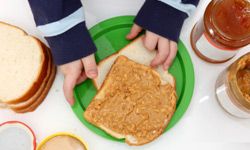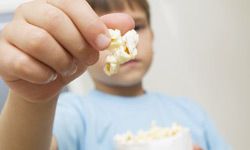Imagine this scene: Typical child comes home from preschool or daycare. Responsible adult has healthful snacks waiting: fresh grapes, cheese cubes and animal crackers. Child munches the wholesome morsels while excitedly relating the events of the day.
What's wrong with that picture? Every detail sets up a choking hazard:
Advertisement
- Young children are just acquiring a full set of molars, the teeth that grind food into bits. Their grasp of how and when to use them is still sketchy. Complicating matters, their windpipe is, at its narrowest point, about the diameter of a drinking straw.
- Eating while talking is a choking risk for anyone. A child's physical and intellectual immaturity compounds the problem.
- All of the foods listed, due to size, shape and texture, are prone to cause choking.
Added up, these factors can turn healthful and much-loved childhood foods into potential killers. In fact, asphyxiation due to choking is the fourth leading cause of accidental death in children under age 5, and food is often to blame [source: New York Department of Health].
Under the right (or wrong) conditions, almost any solid food can be a choking threat. This article outlines a "Five Most Wanted" list around the five food groups to help you identify and disarm the most dangerous ones. For convenience, we've named each group for its most notorious member, but any food with the same qualities should be suspect.
First, a sweet treat can become a bitter pill.




